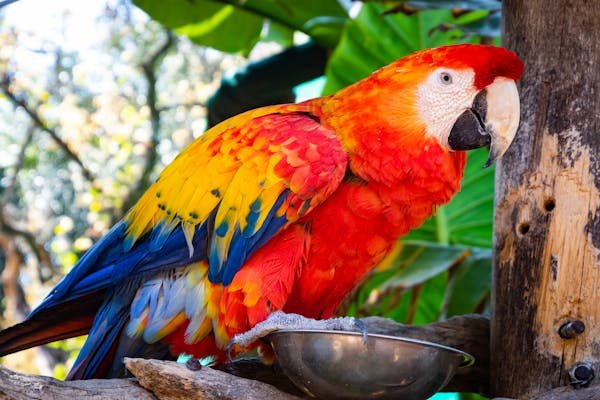Numerous challenges are found in studying wild parrots, as they are difficult to catch and once caught, they are difficult to mark. Most wild bird studies rely on banding or wing tagging, but parrots chew off such attachments.
[64] Parrots also tend to range widely, and consequently many gaps occur in knowledge of their behaviour. Some parrots have a strong, direct flight. Most species spend much of their time perched or climbing in tree canopies. They often use their bills for climbing by gripping or hooking on branches and other supports.

Researchers at the New York Institute of Technology published findings that showed parrots used their beaks as a “third limb” to propel themselves.[66] On the ground, parrots often walk with a rolling gait.
Parrots—along with ravens, crows, jays, and magpies—are among the most intelligent birds, and the ability of some species to imitate human speech enhances their popularity as pets. They form the most variably sized bird order in terms of length; many are vividly coloured and some, multi-coloured.